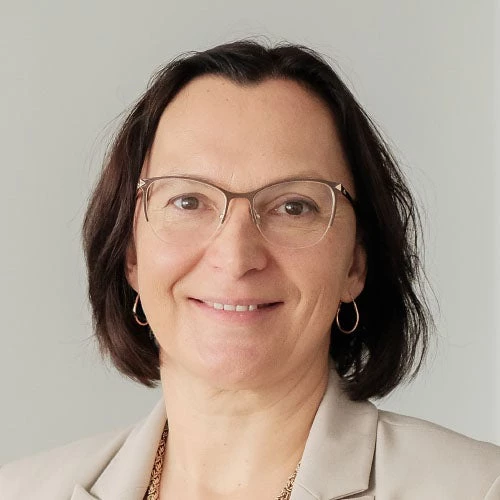When I visited Iasi, in October 2017, the World Bank had just started preparing its Systematic Country Diagnostic for Romania (SCD) – a comprehensive economic analysis we produce every 4-5 years, designed to give us a better understanding of both the main challenges faced by a country and the pathways towards more sustainable growth.
In Iasi, as in many other Romanian cities, I heard firsthand what I had been experiencing since first coming to the country four months earlier: Romania has a diverse set of challenges and a unique pathway towards development – from better roads, to stronger institutions, and an improved business climate. A highway that connects the region of Moldova to Transylvania and the rest of Europe; an education system producing a workforce with the right mix of skills to fully succeed in today’s competitive labor market; institutions capable of delivering policy predictability and continuity in implementing its development objectives. All of these components are vital for Romania as it travels on the path towards more inclusive growth and prosperity.
After Iasi, I visited Timisoara. Large, multinational companies who came to invest in Romania flagged an education system that is not producing graduates with the skillset that complements their needs. Therefore, companies are investing in reskilling their staff, building partnerships with Universities, and experimenting in innovative ways to offer young recruits on-the-job experience and training to be more productive and better at their jobs.
By March 2018 I had visited 9 counties and over a dozen cities, big and small, from Constanta to Caransebes, and from Dej to Alexandria. In discussions with young people, entrepreneurs, business leaders, the frequent message that continued to resonate was that Romania needs stronger institutions to push forward a bold development agenda.
In my meetings throughout a country so rich in culture, history, and regional distinctiveness, I had discovered my “bingo card” – a set of three challenges that stuck with me everywhere I went. Romanians want better roads to facilitate mobility and attract investments. Romanians aspire for a better education system that can deliver the hope of a brighter future for all children. And Romanians desire stronger institutions that can provide better public services and consistency in political commitments that aim to move things forward.

My colleague, Donato de Rosa, argues in a recently published blog summarizing our SCD analysis, that lagging education, poor infrastructure, and uncertain regulations are Romania’s top challenges to reducing poverty and promoting sustainable growth. Our research is clearly consistent with how Romanians perceive their daily challenges.
So, how can the World Bank help Romania overcome these challenges?
Yesterday, on June 19, the World Bank Board of Executive Directors, endorsed the Romania Country Partnership Framework for 2018-23. It represents the World Bank’s vision for addressing the overarching, “bingo card” challenges that have shaped my understanding of Romania during my first year as World Bank Country Manager here. The strategy will have three main pillars.
First, the strategy will support improvements in human capital. What this means for the World Bank is that we will focus on addressing Romania’s education and health sector challenges. In education, for example, we will support the transition to tertiary education and help children from vulnerable and marginalized communities have a better chance of success in life. 83 percent of Romania’s low-performing schools are in rural areas. This is not right. This unfortunate reality is depriving tens of thousands of children of their chance in life. We will also work to improve the linkages between job-seekers and available jobs to ensure that the skills and potential of Romanians is better utilized.
Second, the strategy will focus on helping Romanian companies do better. I have been inspired by the dynamism and the tremendous contribution to Romania’s economic transformation by the private sector. Romania’s GDP per capita rose from 30 percent of the European Union (EU) average in 1995 to 60 percent in 2017.
Today, over 70 percent of the country’s exports go to the EU and this impressive story is intrinsically linked with the success of Romania’s entrepreneurs. But private companies, especially small and medium ones, continue to face limited access to finance. Our colleagues at the IFC will continue to support improved access to finance and stronger capital markets, while on the World Bank side we are looking to work with cities - helping them rethink their attractiveness to potential investors. Together, IFC and the World Bank will work to advance a more competitive Romania.
Finally, the strategy will strengthen Romania’s preparedness to face the risks of natural disasters and the impacts of climate change. While this may not be something that many people may routinely think about, building Romania’s resilience to natural disasters is fundamentally important to the country’s social and economic progress and for safeguarding livelihoods. Among all capital cities in the EU, Bucharest is the most exposed to earthquakes. Furthermore, potential, frequent floods in the country threaten losses in the billions of dollars - disproportionately affecting the poorest people in rural communities. A more prosperous Romania is therefore inextricably linked to a more resilient Romania.
As we move ahead toward implementing the newly endorsed Country Partnership Framework, cognizant of our strong partnership with the country and inspired by the extraordinary transformation over the past quarter century, we must not be complacent. Romania must continue to reform and perform in order to deliver the promise of a better and more prosperous life to all its citizens.


Join the Conversation